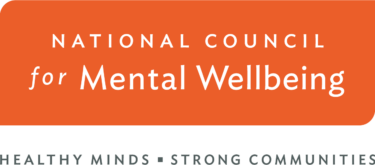Connect with renowned thought leaders for insightful presentations and networking opportunities that span the crisis continuum!
Learn MoreCrisis Response
A mental health crisis system is more than a single program. It is an organized set of structures, processes and services to meet all types of mental health and substance use crisis needs effectively and efficiently for everyone in a community.
The National Council is the bridge linking our members — the mental health and substance use treatment organizations providing crisis care and services — with other national thought leaders working to strengthen the crisis system nationwide. Together, we’re building a system to support anyone facing a mental health or substance use crisis when and where they need support.
An ideal crisis system is robust and rigorous, and it must be standardized enough to meet the needs of all those it serves while also being flexible enough to best meet the needs of specific communities.
National Council’s groundbreaking guide to designing and implementing a mental health crisis system, addressing every point in the continuum of crisis services.
Download the GuideThe 988 Suicide & Crisis Lifeline: Charting a New Course for Crisis Response
The historic launch of the 988 Suicide & Crisis Lifeline in July 2022 marked a new opportunity to strengthen crisis response services in every community across the country. Through bolstering support for 988 and ensuring sustainability and growth of community crisis services, included Certified Community Behavioral Health Clinics (CCBHCs), communities and states can work to create the ideal crisis care system — one that offers people someone to contact, someone to respond and a safe place for help.
The mental health crisis hotline is working. So why doesn’t it get the funding it needs?
Read NowLearn more about each of the three pillars of the crisis continuum.
The National Council is a champion of 988 and has supported all stages of its development and implementation. Learn more about how we got here and where we’re going next.
Setting the Stage
The Historic Launch
- 988 Fact Sheet
- 988 Implementation and Future Priorities
- National Council president and CEO featured in NPR story on 988’s launch (NPR)
- National Council Statement on the Bipartisan Safer Communities Act becoming Law
- New Law Can Fast-track 988 Success (The Hill)
- 988 and 911: Similarities and Differences
Shaping a Bright Future
- Quality Measurement in Crisis Services
- Mapping the Crisis System of Care: Alternatives to Emergency Departments
- Partnering With Schools to Improve Youth Mental Health
- One Year Into 988: Sustained Investment Needed
- 988 Year One: Milestones and Next Steps
- 988: Reaching Its Full Potential
- CCBHCs and Crisis Response Services for Children, Youth and Families
- The Role of CCBHCs in Strengthening Crisis Care
- CCBHC Criteria Series: Establishing an Ideal Crisis System
- CCBHCs: A Vision for the Future
- 2024 CCBHC Impact Report
- 2022 CCBHC Impact Report
- Mental Health First Aid
- National Council Statement on Updated Suicide Prevention Strategy
- Mass Violence in the United States: Definition, Prevalence, Causes, Impacts and Solutions
Partner Resources
- National Guidelines for Implementing Behavioral Health Crisis Care (Substance Abuse and Mental Health Services Administration [SAMHSA])
- National Guidelines for Child and Youth Behavioral Health Crisis Care (SAMHSA)
- 988 Fact Sheet (SAMHSA)
- 988 FAQ (SAMHSA)
- 988 Lifeline Timeline (SAMHSA)
- Trauma-informed, Resilience-oriented Schools Toolkit (National Center for School Safety)
- 988 Lifeline Performance Metrics (SAMHSA, updated monthly)
- 988 Crisis Response State Legislation Map (National Alliance on Mental Illness)
- Crisis Roadmap (Connections Health Solution)
- 2024 National Strategy for Suicide Prevention and Federal Action Plan (SAMHSA)
Our 2024 CCBHC Impact Report shows that CCBHCs are expanding the availability of services across the crisis continuum directly and through partnerships with 988 call centers, mobile crisis response providers and state-sanctioned crisis systems.
Download the Report!This vision of a nationwide behavioral health crisis system is critical to improving the wellbeing of our nation and ensuring everyone can thrive.
View Resource